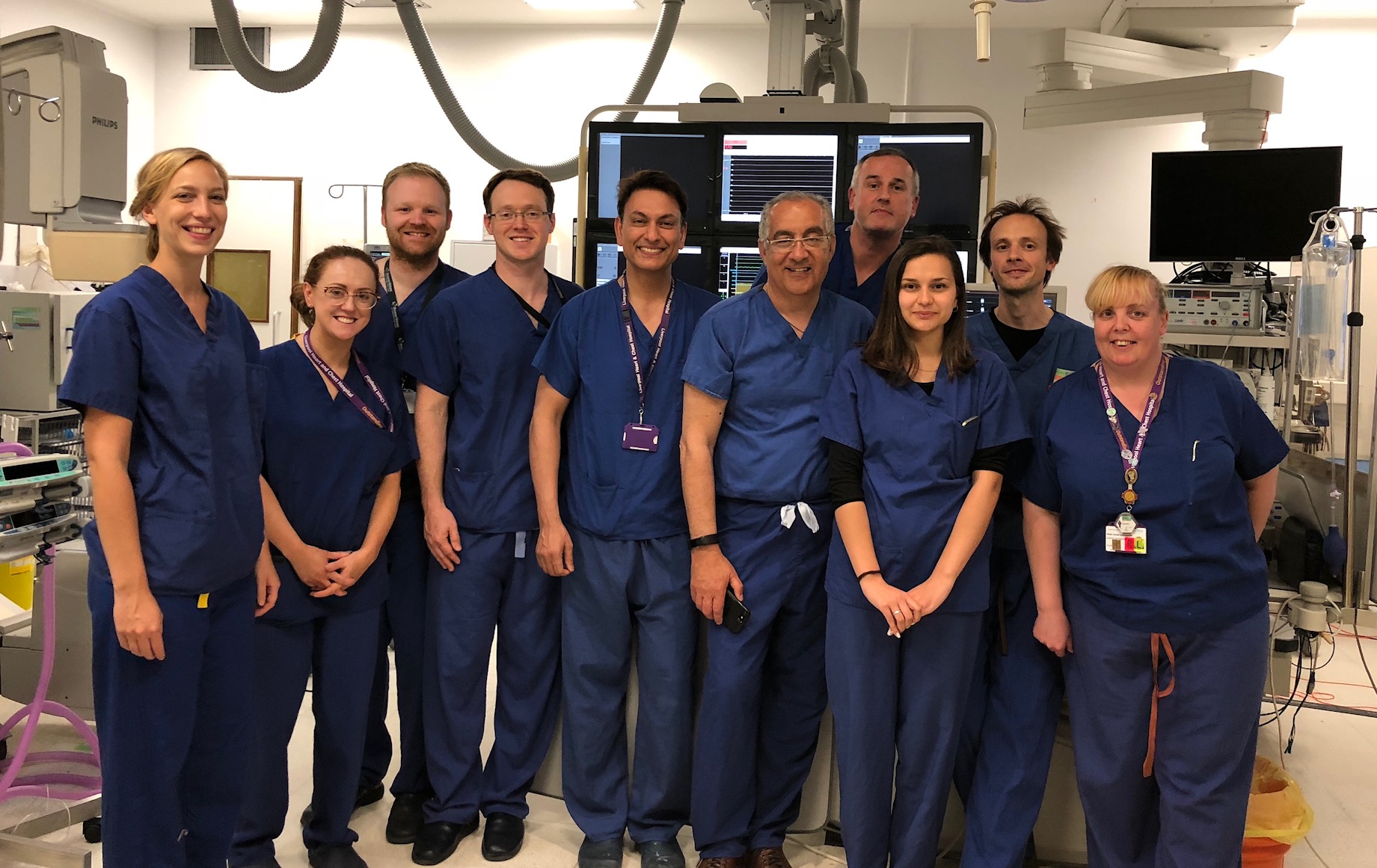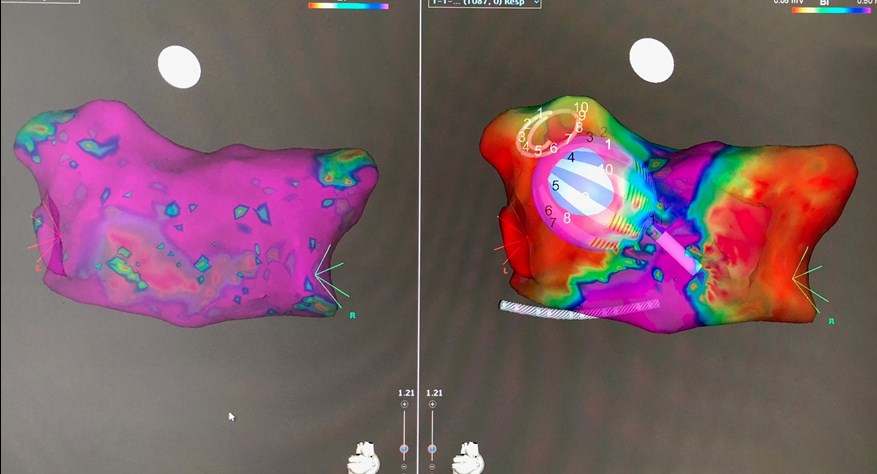LHCH treats first patients in SHINE study of multi-electrode radiofrequency balloon catheter
Liverpool Heart and Chest Hospital has successfully treated its first patients in a multi-centre European clinical study, SHINE, which aims to evaluate a brand new technology for treating atrial fibrillation (AF).
The SHINE study is an early-man pre-approval study evaluating Biosense Webster’s multi-electrode radiofrequency (RF) balloon catheter (Helios balloon) for its ability to isolate pulmonary veins when treating AF.
AF is an extremely common heart condition that causes an irregular and often abnormally fast heart rate.
The study aims to enrol 80 patients at five leading centres across Europe, including Liverpool Heart and Chest Hospital.
Dr Dhiraj Gupta, Consultant Cardiologist and Electrophysiologist at Liverpool Heart and Chest Hospital, became only the third physician in the world to carry out the innovative new procedures this week, following procedures carried out by Professor Schilling at Barts Hospital in London and Professor Grimaldi at Bari in Italy.
Dr Gupta said: “Although we already get good success rates with the current catheter ablation technologies to treat AF, there remains the need to improve the success rates further and to make the procedures quicker, so that more patients can be treated efficiently.
“The procedure is carried out by a cardiologist threading the Helios balloon catheter through blood vessels to the left atrium of the heart. Once there, the balloon is inflated near the pulmonary veins and tailored RF energy is applied; this prevents the pulmonary veins from emitting faulty electrical impulses that can trigger AF.”
He added: “Our very encouraging experience so far leads to the hope that this new device will not only be an important advance in catheter ablation technology, but that the innovation will lead to improved clinical outcomes for our patients as well as more efficient procedures.”

Picture shows the Research and Development team from Biosense Webster from California, Israel and Belgium along with the Catheter Lab staff from LHCH. Dr Dhiraj Gupta is pictured centre.

Picture shows voltage maps of a case before and after ablation (purple colour indicates faulty tissue, red colour indicates treated issue).